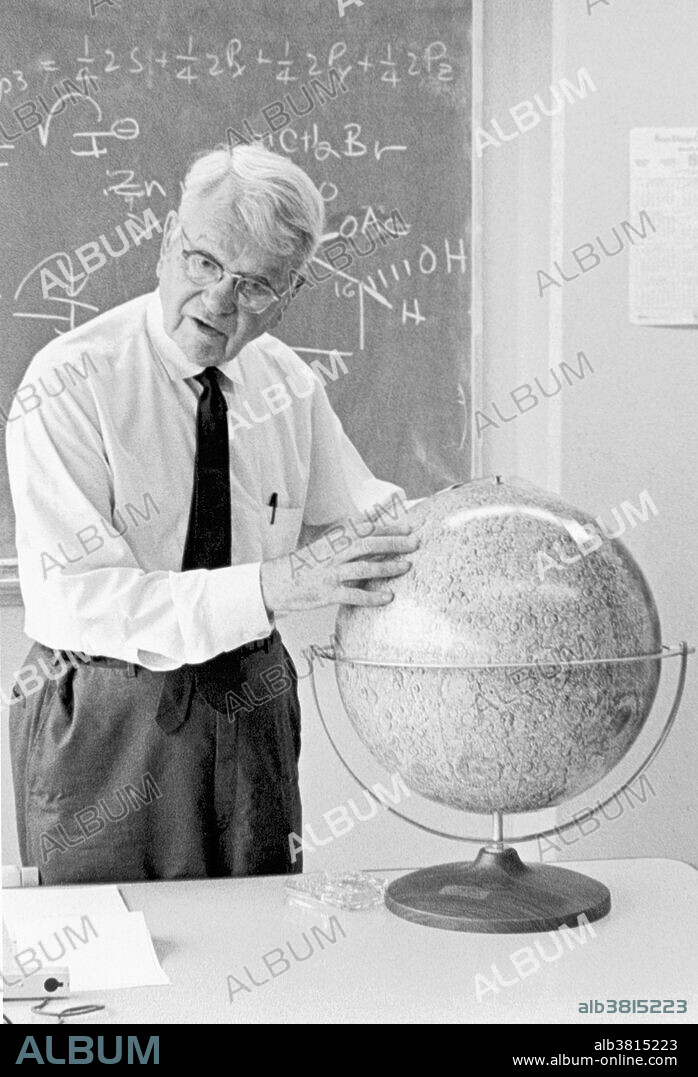alb3815223
Harold Urey, American Physical Chemist

|
Add to another lightbox |
|
Add to another lightbox |



Buy this image.
Select the use:

Title:
Harold Urey, American Physical Chemist
Caption:
Harold Clayton Urey (April 29, 1893 - January 5, 1981) was an American physical chemist .He received his PhD in 1923, and was awarded a fellowship by the American-Scandinavian Foundation to study at the Niels Bohr Institute in Copenhagen. He was a research associate at Johns Hopkins University before becoming an associate professor of Chemistry at Columbia University. In 1931, he began work with the separation of isotopes that resulted in the discovery of deuterium and earned him the Nobel Prize in Chemistry in 1934. During WWII Urey turned his knowledge of isotope separation to the problem of uranium enrichment. He headed the group located at Columbia University that developed isotope separation using gaseous diffusion. Urey speculated that the early terrestrial atmosphere was probably composed of ammonia, methane, and hydrogen. One of his Chicago graduate students was Stanley Miller, who showed in the Miller-Urey experiment that, if such a mixture be exposed to electric sparks and water, it can interact to produce amino acids, commonly considered the building blocks of life. Work with isotopes of oxygen led to pioneering the new field of paleoclimatic research. He died in 1981 at the age of 87.
Category:
people • black & white • Science: Personalities
Credit:
Album / Science Source / Omikron
Releases:
Image size:
2550 x 3743 px | 27.3 MB
Print size:
21.6 x 31.7 cm | 8.5 x 12.5 in (300 dpi)
Keywords:
1893 • 1934 • 1981 • 20 20TH XX XXTH TWENTIETH CENTURY • 20 XX TWENTIETH CENTURY • 20TH CENTURY • 20TH • AMERICA • AMERICAN • ATOM BOMB RESEARCH • ATOMIC BOMB RESEARCH • BLACK & WHITE • BW • CELEBRITIES • CELEBRITY • CHEMIST • CHEMISTRY • DISCOVERY OF DEUTERIUM • FAMOUS PEOPLE • FAMOUS • FIGURE • HAROLD CLAYTON UREY • HAROLD UREY • HISTORIC • HISTORICAL • HISTORY • IMPORTANT • ISOTOPES • MALE • MAN • MEN • NOBEL LAUREATE • NOBEL PRIZE LAUREATE • NOBEL PRIZE RECIPIENT • NOBEL PRIZE WINNER • NOBEL PRIZE • NOBEL RECIPIENT • NOBEL WINNER • NOBEL • NOBELIST • NOTABLE • PALEOCLIMATIC RESEARCH • PEOPLE • PERSON • PERSONALITIES • PERSONALITY • PHOTO • PHOTOGRAPH • PHYSICAL CHEMIST • PHYSICAL CHEMISTRY • RESEARCH • SAVANT • SCIENCE • SCIENCE: PERSONALITIES • SCIENTIFIC • SCIENTIST • TWENTIETH CENTURY • UNITED STATES • UREY • US • USA • WELL-KNOWN


 Pinterest
Pinterest Twitter
Twitter Facebook
Facebook Copy link
Copy link Email
Email
